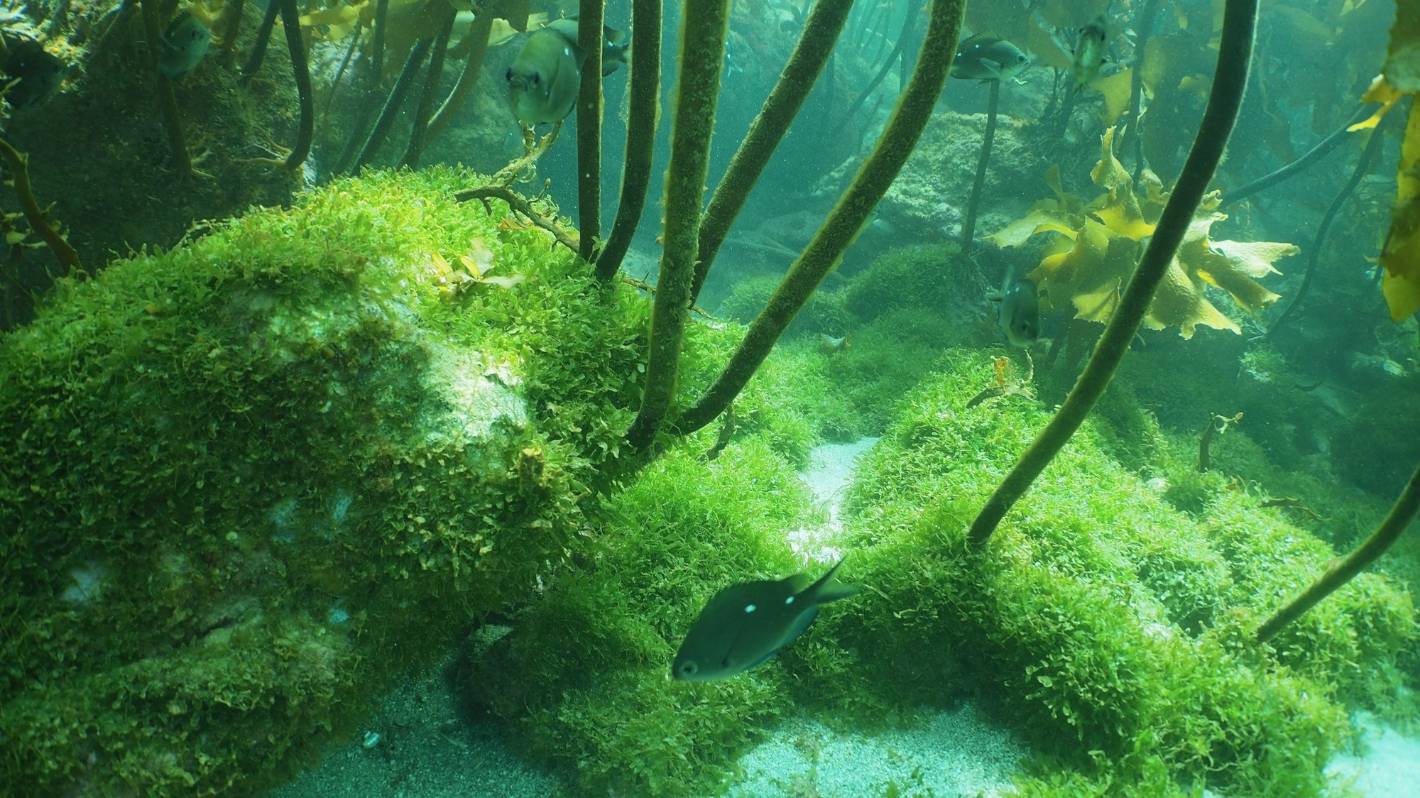The multimillion-dollar Bay of Islands tourism and recreation industry is facing potential economic and environmental ruin, a Northland biosecurity leader is warning, as the new invasive superspreader caulerpa seaweed is discovered in more than a dozen locations.
Exotic caulerpa has been identified by Northland Regional Council (NRC) divers making emergency checks in Bay of Islands in the last week, since the discovery of the “foot and mouth of the sea” at Te Rāwhiti in the eastern Bay of Islands on May 3.
The seaweed is fast-growing and is known to smother shellfish beds and reduce diversity of fauna in the sea.
The find is a first for the New Zealand mainland, outside the pest’s Great Barrier Island stronghold.
READ MORE:
* Killer seaweed invasion is ‘an environmental disaster on the scale of the Rena’
* Superspreader seaweed threatens Northland coast, ocean ecologist warns
* Fishing ban as ‘highly invasive’ super-spreader seaweed reaches Coromandel island
Council biodiversity and biosecurity working party chair, Geoff Crawford, said the devastating find in a number of Bay of Islands locations should be a huge wakeup call for the Government and all New Zealanders who live, work or play in the Bay of Islands.
Caulerpa has been found in more than 45% of the roughly 25 mainland spots investigated in the bay, including at Omakiwi Cove, Shag Rock off the cove’s nearby Okuia Point and Parorenui Bay.
Glenn Edney/Supplied
Caulerpa was first found in New Zealand waters in Aotea Great Barrier Island about two years ago. (File photo)
Crawford said it would be reasonable to expect the seaweed would be found beyond the week’s checked locations.
More than 1000 yachts and launches head to the Bay of Islands annually with recreational fishing potentially facing huge impacts as well. Many of the boats head to the Bay of Islands from Auckland via Great Barrier Island. Omakiwi is a hugely popular boat anchorage.
Anchors, rather than boat hulls, are thought to be the main spreading method.
Crawford said people going boating in the Bay of Islands needed to be particularly careful about checking their anchors when anchoring in affected areas around Omakiwi.
He said eradication was the only option, even if it took 10 years.
About 30 eastern Bay of Islands locations have so far been checked by NRC divers with NIWA dive specialists also involved, including Urupukapuka Island.
MPI/Supplied
During Cyclone Gabrielle, an estimated 100 tonnes of caulerpa seaweed washed up on shore in Okupu Bay on Great Barrier Island. (File photo)
Te Rawhiti environmental restoration and pest control specialist Rana Rewha (Patukeha) found ten 20cm clumps of caulerpa on the beach at Omakiwi Cove on May 3.
Rewha said he felt lost about ‘where to from here’, upon finding the pest on the coast that provided essential kaimoana.
“It’s devastating for the whole Bay of Islands,” Rewha said.
He said caulerpa had the potential to impact cultural, social, environmental, economic and spiritual aspects of life for mana whenua and everybody in the Bay of Islands.
Wellington-based Ministry for Primary Industries director readiness and response services John Walsh, who is leading the government’s caulerpa response, will be among about 150 people expected at a Te Rāwhiti Marae caulerpa hui on Wednesday.
It’s being held to hear more about its spread and to put in place action towards getting the pest sorted. NRC and NIWA will also be present.
Rewha said the hui was for all those in the Bay of Islands because the problem affected everybody. Boating clubs, marinas and others were expected to be at the hui.
Business Paihia chair Charles Parker said finding caulerpa at Te Rāwhiti and beyond was of significant concern.
“Anything that threatens the natural environment is of concern because we rely so heavily on it to attract visitors,” Parker said.
The natural environment was used in marketing the Bay of Islands, which now included a new marine mammal sanctuary.
Glenn Edney/Supplied
Caulerpa, as seen on Great Barrier Island, can grow from a piece the size of a freckle to cover an area the size of a rugby field in just a few weeks. (File photo)
Parker said it was important to build a better picture of where caulerpa is in the Bay of Islands. More information would assist decision-making on the best way to eradicate it, if that was possible.
“We eradicate pests on the [Ipiriri] islands, we eradicate pests on the mainland. If we have to fight an invasive seaweed I am sure people would get in behind that,” Parker said.
Far North District Council Bay of Islands-Whangaroa Community Board member Jane Hindle, from Russell, said finding caulerpa was of concern for the many people who used the Bay of Islands for kaimoana gathering, fishing and recreation.
Caulerpa can grow from a piece the size of a freckle to cover an area the size of a rugby field in just a few weeks. It carpets the sea floor like a horizontal trifid and smothers traditional kaimoana sources such as cockles.
Local Democracy Reporting is Public Interest Journalism funded through NZ On Air




